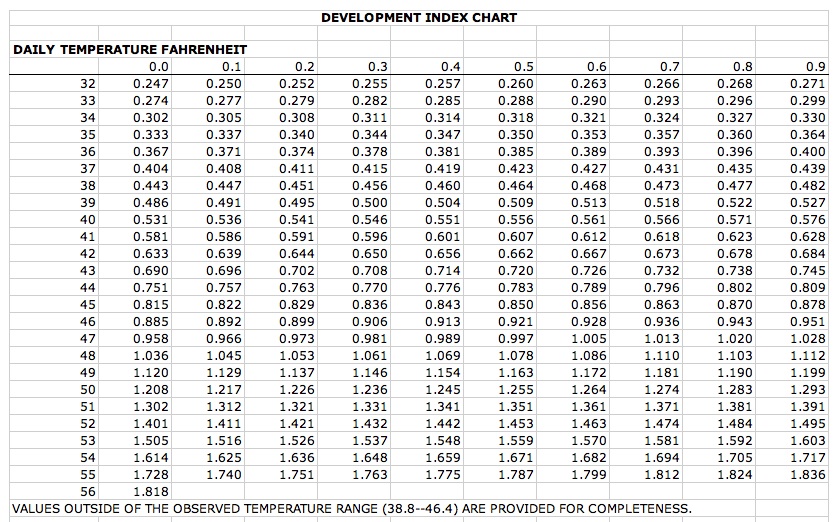PREDICTING WHEN YOUR FRY WILL SWIM UP
So, for example, at 38.3 degrees, the value of 0.456 is added to whatever the cumulative DI was on the previous day.
As mentioned in the previous page, we’ve provided Google Sheets spreadsheets (available here) that will allow you to predict when your alevin/fry will swim up. (First, you’ll have to download the Google Sheets file–find Download on the File menu.) In what follows, you will want to read the Instructions page (Tab A) and, especially, click on Tab B to access the worksheet called “B. Temp. entry and DI record.”
Here’s an image of the four tabs you’ll find at the bottom of the Google Sheets file.
From that point forward, all you need to do is enter the daily water temperature into the cell in Column B that corresponds to the correct date. The spreadsheet will automatically calculate the new Cumulative DI.
It is important to enter water temperature data for every day, including weekends and schools breaks, even if you haven’t checked the tank temperature. For those days when you don’t visit the tank, estimate (or interpolate) the water temperature. So if the temperature was 51 when you left on Friday afternoon and it was 49 when you returned to the classroom on Monday morning, enter a temperature of 50 for each of the weekend days.
As your cumulative DI approaches 85, you should remove the front and top foaminsulation (this will help stimulate the swim-up instinct), and you need to become very attentive. Look for evidence of fry swimming to the surface. (You may want to review this “Idaho TIC document” to get some help on identifying what swim-up-ready fry look like.) Fry require careful monitoring at this stage and should be inspected several times every day, including weekends and school breaks. If some fry start swimming up, provide the tiniest pinch of food. Remove whatever is not eaten after ten minutes. When fry have begun eating reliably, you can feed them as often as five times a day, but always just the tiniest pinch.
As your fry start to swim up, keep records of the percentage that do so in Column E of Sheet B (and of the percentage feeding in Column F of Sheet B). If you and other teachers keep good records and share those with us, we will be able to analyze these data, and this may allow us to improve the formula that we’re presently using to predict swim-up readiness.
And don’t let the bottom of the net breeder get too dirty! (More on this later.)
SWIM-UP VIDEOS
Here are a couple of YouTube videos that may help you recognize swim-up behavior.



